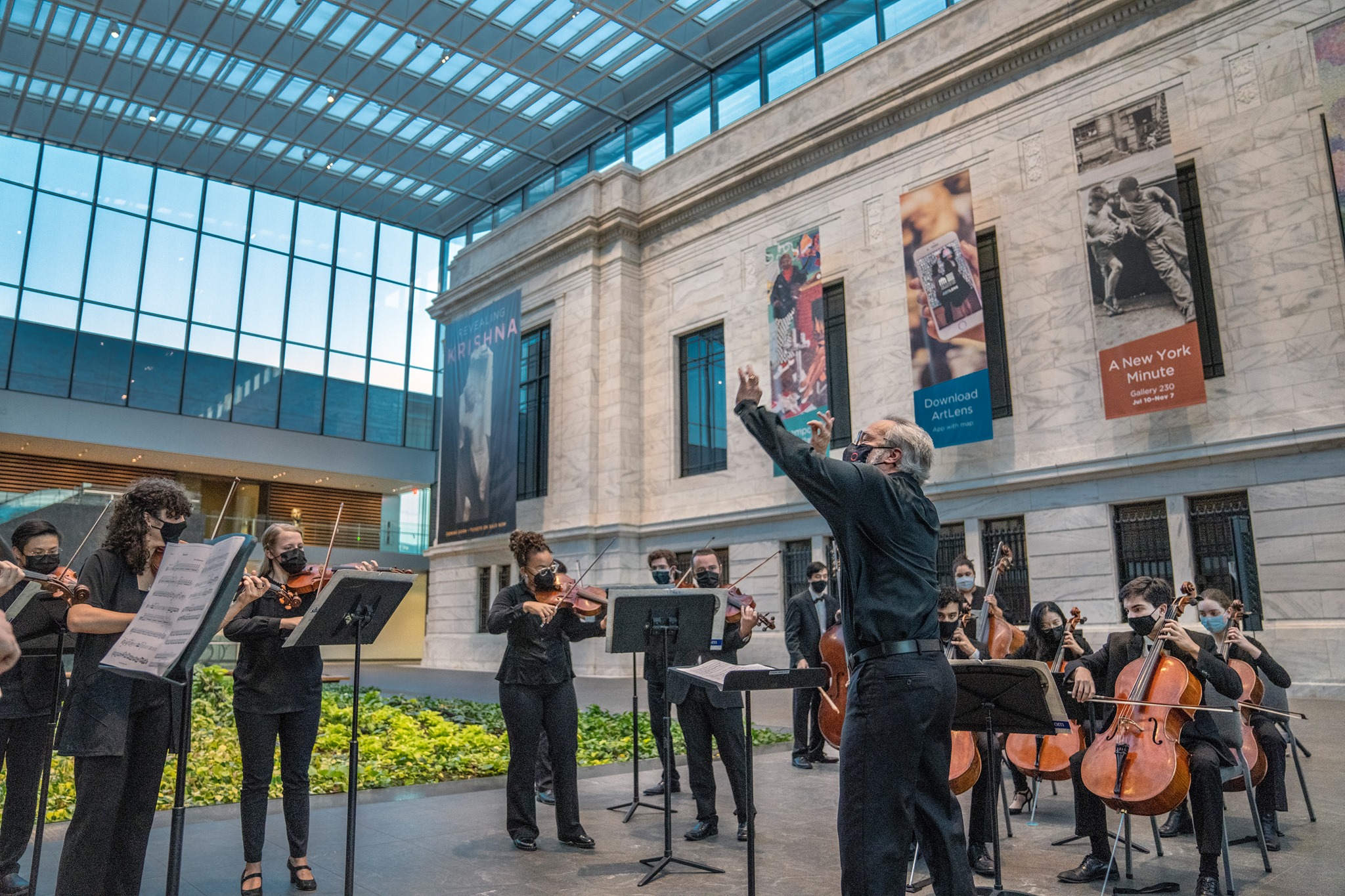by Daniel Hathaway

The well-attended, free performance gave Northeast Ohio classical music fans their first local look at the Uruguayan-born conductor, who led the Oregon Symphony for two decades and continues to serve as artistic director of Chicago’s Grant Park Music Festival during the summers. (Above, Kalmar led CIM musicians in a pop-up concert at the Cleveland Museum of Art last week.)
In music by Šerkšnytė, Beethoven, and Dvořák, Kalmar showed himself to be a meticulous but expressive presence on the podium.
While his right hand signaled entrances and attacks, his left independently shaped phrases and musical arcs. Working together, the two drew clean but rich textures from the Orchestra, who were attentive to every subtlety in Kalmar’s interpretations.
Lithuanian composer Raminta Šerkšnytė’s Fire was written to lead directly into Beethoven’s Fifth Symphony — it ends with that work’s portentous opening notes — but on this occasion was followed by Beethoven 4. Overlooking that final disjunction, her work is an eloquent exploration of the various characters represented in that primal element. Šerkšnytė writes energetically with a keen ear for orchestral textures and color, and Kalmar and the Orchestra gave Fire a brilliant reading.
Beethoven’s Fourth Symphony is one of the less-often played of the Nine, but its charms and humor came across handsomely in CIM’s performance on Sunday. Kalmar led a thoroughly professional performance replete with fine playing from ensemble and soloists alike. Samuel Watson flawlessly dispatched the frightening bassoon solo in the finale twice, seemingly without breaking a sweat.

Published on ClevelandClassical.com October 13, 2021.
Click here for a printable copy of this article



